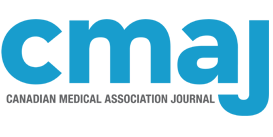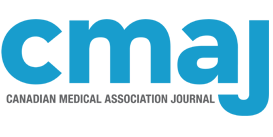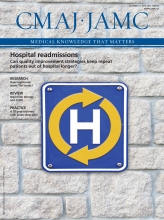Sjögren syndrome is a chronic, systemic disorder of an autoimmune nature. It is characterized by lymphocytic infiltration of the exocrine (mainly salivary and lacrimal) glands and by remarkable B-cell hyperactivity. The latter is manifested by hypergammaglobulinemia and the presence of serum autoantibodies, including antinuclear antibodies, rheumatoid factor, cryoprecipitable immunoglobulins and antibodies against two ribonucleoproteinic complexes named Ro/SSA and La/SSB; these antibodies are considered hallmarks of the disease.1,2 Although their exact role is not known, recent data suggest that antibodies against the Ro52 component of the Ro/SSA antigen (a 52kD protein that inhibits proinflammatory responses) might inhibit its regulatory function.3 The condition is nine times more common among women than among men, with peak onset during menopause.1 A recent review suggests that the prevalence ranges from 0.1% to 4.8%,1 with rates increasing with advanced age.4,5 Heterogeneity in inclusion criteria, ethnic origin, sample size and sex distribution between studies contributed to the observed variability.
Although Sjögren syndrome is classically considered to be localized disease of the exocrine glands, mainly manifested with oral and ocular dryness, it also has a wide range of systemic clinical manifestations that affect essentially any organ system, and a small number of cases are complicated by the development of non-Hodgkin lymphoma.1,6 Secondary Sjögren syndrome is associated with an established connective-tissue disease.
As is the case for many autoimmune diseases, the primary etiopathogenetic events are not known. The current hypothesis is that an interplay between environmental contributors (e.g., viruses, stress, hormones) and the patient’s genetic background can lead to inflammatory responses against epithelial tissues. In this review, we summarize the current evidence, mostly from observational, open-label and randomized clinical trials, for the clinical manifestations, diagnosis and management of Sjögren syndrome (Box 1).
Evidence used in this review
Using the MeSH term “Sjögren syndrome,” we searched MEDLINE for randomized controlled trials, systematic reviews and observational studies involving adult humans. We included studies published in English between Jan. 1, 1975, and Nov. 25, 2012. We also manually searched the reference lists of relevant articles retrieved.
What are the clinical features of Sjögren syndrome?
The clinical features of Sjögren syndrome can be largely divided into those related to exocrine dysfunction (glandular) and those that affect organs other than the exocrine glands (extraglandular or systemic). The latter can be further divided into nonspecific features, those characterized by periepithelial infiltrates in parenchymal organs and those that result from immunocomplex deposition as a result of B-cell hyperactivity.7,8 Most patients with Sjögren syndrome (about 90%) have an indolent benign course; however, a small but important number of cases (5%–10%) are complicated by immunocomplex pathology and lymphoid neoplasia, both of which are associated with high mortality (a 3.25-fold increase compared with the general population).6,7,9
The main features of glandular and extraglandular manifestations in Sjögren syndrome are shown in Table 1.6,7,9–40 Besides sicca features, easy fatigability is one of the most frequent symptoms, occurring in 70% of patients with primary Sjögren syndrome; these patients typically report functional disability and an increased need for rest.13,26,41 Patients with primary Sjögren syndrome may show several psychopathologic features depending on premorbid personality traits and in association with antibodies against neuropeptides.42 Increased rates of neuroticism, psychoticism, obsessiveness, hypochondriasis, paranoid ideation, somatization, obsessive–compulsive symptoms, sleep disturbances and defective coping strategies have been reported.7,43–47
Clinical manifestations of primary Sjögren syndrome
Non-Hodgkin lymphoma is a well-recognized complication of Sjögren syndrome.6,39 Peripheral neuropathy, glomerulonephritis, lymphopenia, vasculitis or purpuric lesions, low C4 levels, cryoglobulinemia and the presence of germinal centres in salivary gland biopsy samples are well-recognized adverse predictors of lymphoma.7,9,39,40 In a comparative analysis involving patients with mucosa-associated lymphoid tissue lymphoma with or without underlying autoimmune disease, there were no differences in the rate of relapse, time to relapse or survival.48
How should a diagnosis of Sjögren syndrome be made?
The key to prompt diagnosis is clinical evaluation for every patient who presents with symptoms of oral or ocular dryness. This evaluation should include a complete systems review, including specific questions to assess oral and ocular dryness, clinical examination and investigations to assess the degree of exocrine gland dysfunction, the presence of relevant immunologic abnormalities and the extent of organ involvement. Because sicca symptomatology can be attributed to several different clinical entities, the differential diagnosis is extensive (Box 2).26,49–51 In a prospective multicentre trial, the prevalence of Sjögren syndrome in a cohort of patients with clinically important aqueous-deficient dry eye was 11.6%.52 In contrast, in a closed rural community, about 15% of patients (n = 35) with sicca symptoms who underwent full evaluation for Sjögren syndrome fulfilled the classification criteria for the diagnosis.53
Differential diagnosis of Sjögren syndrome26,49–51
Medications (e.g., diuretics, antihistamines)
Viral infections (e.g., HIV infection, hepatitis C virus infection)
Tumours (e.g., parotid gland tumour)
Metabolic disorders (diabetes mellitus, lipoproteinemia types II, IV and V)
Irradiation
Sarcoidosis
Chronic graft-versus-host disease
Lymphoma
Amyloidosis
IgG4-related sialadenitis
Autoimmune thyroid disease
In clinical practice, patients who present with sicca symptoms should be offered assessment of lacrimal gland function (measuring tear production using Schirmer test [wetting on a paper strip of ≤ 5 mm in 5 min]; sensitivity 76.9%; specificity 4%–72%) and examination of the cornea and conjunctiva using rose bengal or lissamine green stain (reveals punctuate or filamentary keratitis lesions, typical of keratoconjunctivitis sicca; sensitivity 64.3%; specificity 81.7%). Unstimulated saliva secretion should also be measured (in a graded tube; > 1.5 mL in 15 min is considered normal; sensitivity 56.1%; specificity 80.7%). A biopsy of a minor salivary gland should be performed to assess the presence of lymphocytic infiltrates around salivary gland epithelium (hallmark of Sjögren syndrome; sensitivity 82.4%; specificity 86.2%).54 An average focus score of 1 or greater in the salivary gland biopsy sample is considered indicative of Sjögren syndrome. The focus score is calculated as the number of lymphocyte foci per 4-mm2 surface based on a survey of at least four lobules. A focus is a cluster of at least 50 lymphocytes.55
Other investigations include a full blood count, chemistry panel, chest radiography, protein electrophoresis, testing for antinuclear antibodies, antibodies against Ro/SSA and La/SSB autoantigens and rheumatoid factor, and viral testing for hepatitis C virus, HIV and human T-lymphotropic virus 1. Antibodies against thyroid antigens and thyroid function should be evaluated, given the association between autoimmune thyroid disease and sicca complaints.50 Antibodies against Ro/SSA can be detected in 70%–100% of patients with Sjögren syndrome; La/SSB antibodies can be detected in 35%–70%. Antibodies against La/SSB are considered to be a highly specific diagnostic marker for Sjögren syndrome.3,56 According to the classification criteria, the presence of these antibodies along with other features suggestive of Sjögren syndrome is sufficient for establishing the diagnosis, even in the absence of a positive salivary gland biopsy.57
Once the diagnosis is established, additional investigational tests (e.g., cryoglobulins, complement levels, immunofixation) should also be offered, particularly to patients with peripheral purpura, peripheral neuropathy, salivary gland enlargement or in situ demonstration of salivary gland lymphoma. Upper endoscopy, bone marrow biopsy and computed tomography scans of the neck, thorax and abdomen should be performed to detect the potential development and extent of lymphoma.
To aid in the classification of Sjögren syndrome, the international research community proposed the American–European Consensus Criteria for Sjögren’s Syndrome (Box 3), which require the presence of either focal lymphocytic infiltrates in minor salivary glands with a focus score of 1 or more, or the presence of SSA or SSB autoantibodies along with features suggestive of salivary or lacrimal gland involvement.57 A new set of preliminary criteria was recently proposed by the American College of Rheumatology; these criteria are based solely on objective criteria58 (Box 3).
Classification criteria for Sjögren syndrome
American/European classification criteria57
Ocular symptoms (at least one)
Persistent, troublesome dry eyes every day for longer than three months
Recurrent sensation of sand or gravel in the eyes
Use of a tear substitute more than three times per day
Oral symptoms (at least one)
Feeling of dry mouth every day for at least three months
Recurrent feeling of swollen salivary glands as an adult
Need to drink liquids to aid in swallowing dry foods
Objective evidence of dry eyes (at least one)
Schirmer test ≤ 5 mm/5min
Van Bijsterveld score ≥ 4 (after lissamine test)
Objective evidence of salivary-gland involvement (at least one)
Salivary-gland scintigraphy
Parotid sialography
Unstimulated salivary flow (≤ 1.5 mL/15 min, ≤ 0.1 mL/min)
Histological features
Positive biopsy sample of a minor salivary gland (focus score > 1; refers to a cluster of ≥ 50 lymphocytes per lobule when at least four lobules are assessed)
Autoantibodies
Presence of antibodies to SSA (Ro/SSA) or to SSB (La/SSB)
Classification
Primary Sjögren syndrome requires the presence of four of six criteria, including a positive biopsy sample of a minor salivary gland or antibodies against SSA or SSB, or three of the four objective criteria
Secondary Sjögren syndrome requires an established connective-tissue disease and one sicca symptom plus any three of the four objective criteria
Exclusions: previous radiotherapy to the head and neck, lymphoma, sarcoidosis, graft-versus-host disease, infection with hepatitis C virus or HIV, or the use of anticholinergic drugs
American College of Rheumatology criteria58
Antibodies against SSA (Ro/SSA) or SSB (La/SSB), or positive rheumatoid factor and antinuclear antibody levels of 1:320 or greater
Labial salivary gland biopsy showing focal lymphocytic sialadenitis with a focus score ≥ 1 focus/4 mm2
Keratoconjunctivitis sicca with ocular staining score ≥ 3 (assumes that the patient is not currently using daily eye drops for glaucoma and has not had corneal surgery or cosmetic eyelid surgery in the last five yr)
Classification of Sjögren syndrome, which applies to patients with signs or symptoms suggestive of Sjögren syndrome, requires the presence of at least two of the three aforementioned objective features.
Exclusions: history of head and neck radiation treatment, infection with hepatitis C virus, AIDS, sarcoidosis, amyloidosis, graft-versus-host disease or IgG4-related disease
What therapies are effective for mucosal dryness in Sjögren syndrome?
The treatment of mucosal dryness related to Sjögren syndrome is mainly intended to alleviate symptoms and prevent complications such as dental caries, dysphagia and oral candidiasis. As general measures, alcohol, smoking and medications such as diuretics, antidepressants (with the exception of selective serotonin reuptake inhibitors, especially escitalopram and fluoxetine) and antihistamines should be avoided because they exacerbate mucosal dryness; air conditioning should also be avoided. Mouth hygiene, thorough dental follow-up, stimulation of salivary flow (sugar-free gum or citrus juice) and administration of saliva substitutes are generally advised for the management of oral dryness.59 Salivary substitutes have been shown to improve subjective symptoms of oral dryness (e.g., burning mouth, difficulties with mastication and swallowing) without affecting the rate of salivary output.60 Painful enlargement of salivary glands can be alleviated by local application of moist heat and administration of non-steroidal anti-inflammatory drugs after bacterial infection and lymphoma have been ruled out.
Ocular dryness should initially be treated with preservative-free teardrops or eye lubricants containing either sodium hyaluronate or hydroxypropyl methylcellulose, which improve both subjective symptoms and objective signs of ocular dryness (e.g., Schirmer test, rose bengal staining, impression cytology scores).61–64 In cases of moderate to severe dry eye disease, cyclosporine drops (0.05%) for six months were shown to lead to remarkable improvement in Schirmer test and corneal staining scores and subjective ocular symptoms (e.g., reduced blurred vision, use of artificial tears).65
Among patients with residual gland function, the beneficial use of two cholinergic agents was shown in controlled studies. Patients who used pilocarpine (10–30 mg once daily) showed statistically significant improvements in dryness (oral, ocular, nasal, vaginal, skin) and salivary flow rates. Cevimeline use (30 mg three times daily) has been also associated with improved subjective oral and ocular symptoms, increased salivary flow rates and objective ocular signs.66 Although steroid-containing ophthalmic solutions have shown short-term benefits, caution should be taken with prolonged use because serious adverse effects (e.g., raised intraocular pressure, worsening or development of cataracts, impaired corneal wound healing, increased risk of infection risk) may occur.66–69 Women with vaginal dryness and dyspareunia may benefit from vaginal lubricants, as suggested by studies not focused on Sjögren syndrome.70 In patients with earlier disease onset and preserved salivary function, improvements have been shown using both subjective (visual analog scale [VAS] scores for sicca symptoms) and objective measures after treatment with rituximab (monoclonal antibody against CD20).71
What therapies are effective for the management of systemic features in Sjögren syndrome?
Systemic therapy should be considered for patients showing systemic features and should be tailored to the organs affected and to the severity. Because of a lack of robust data from controlled studies, the management of extraglandular manifestations is mainly based on case-series reports, open-label studies and expert opinion based on biological rationale and experience with other autoimmune diseases. Therapeutic options for the systemic manifestations of Sjögren syndrome are shown in Table 2.59,66,72,73
In patients for whom arthralgia or myalgia is the predominant symptom, hydroxychloroquine therapy has been shown to improve arthralgia, myalgia and joint inflammation; methotrexate can be used in cases of inflammatory arthritis.72,74 For cases of persistent arthritis, rituximab has been shown to significantly improve the tender and swollen joint count.75 A pilot open-label study reported that weekly administration of methotrexate to patients with Sjögren syndrome reduced the frequency of parotid gland enlargement, dry cough and purpura.76 In patients with primary Sjögren syndrome, blockade of tumor necrosis factor α (infliximab and etanercept) does not appear to be effective in reducing subjective and objective measures of salivary and lacrimal function or joint inflammation; augmentation of the already activated type I interferon/B-cell activating factor (BAFF) axis has been suggested to account for this failure.77,78
Cytotoxic drugs (e.g., cyclophosphamide) are reserved for severe extraglandular manifestations, including cutaneous vasculitis and glomerulonephritis. Given that B-cell activation is a disease cornerstone, choosing _targeted therapies against B cells is a logical approach.6,72 Improvement in fatigue scores in a randomized controlled trial and demonstrated efficacy in extraglandular features (e.g., cryoglobulinemic vasculitis) and peripheral neuropathy with reduction of disease activity indices imply that rituximab is a promising therapeutic strategy for Sjögren syndrome.73,75,79–82
Unanswered questions
Key questions remain with regard to disease pathogenesis, clinical spectrum and therapeutic strategies. Four main questions are the focus of basic and clinical research: the identification of proximal triggers (exogenous or endogenous factors) that account for epithelial activation and immunological injury; the thorough characterization of various clinical phenotypes and association with distinct pathogenetic pathways such as type I interferon/BAFF axis–designation of tailored therapies; determination of the underlying genetic, epigenetic and immunologic mechanisms of lymphomagenesis related to Sjögren syndrome; and the implementation of preventative therapeutic strategies against lymphoma development in high-risk patients with Sjögren syndrome.
Key pointsSjögren syndrome is a chronic autoimmune disease that mainly affects middle-aged women.
Clinical manifestations are mainly classified as glandular (manifested mainly by dry eyes and mouth) or extraglandular (systemic).
About 5%–10% of cases are complicated by the development of lymphoma.
Diagnosis is made by observing ocular and oral dryness, by measuring serum autoantibody levels and by observing periductual lymphocyte infiltration in salivary gland biopsy samples.
Local measures and cholinergic agents are the main therapeutic methods used to alleviate oral and ocular dryness. B-cell _targeted therapies are reserved for the systemic manifestations of the syndrome.
Footnotes
Competing interests: None declared.
This article has been peer reviewed.
Contributors: Clio Mavragani drafted the manuscript and Haralampos Moutsopoulos critically revised it. Both authors contributed to data collection and approved the final version.








